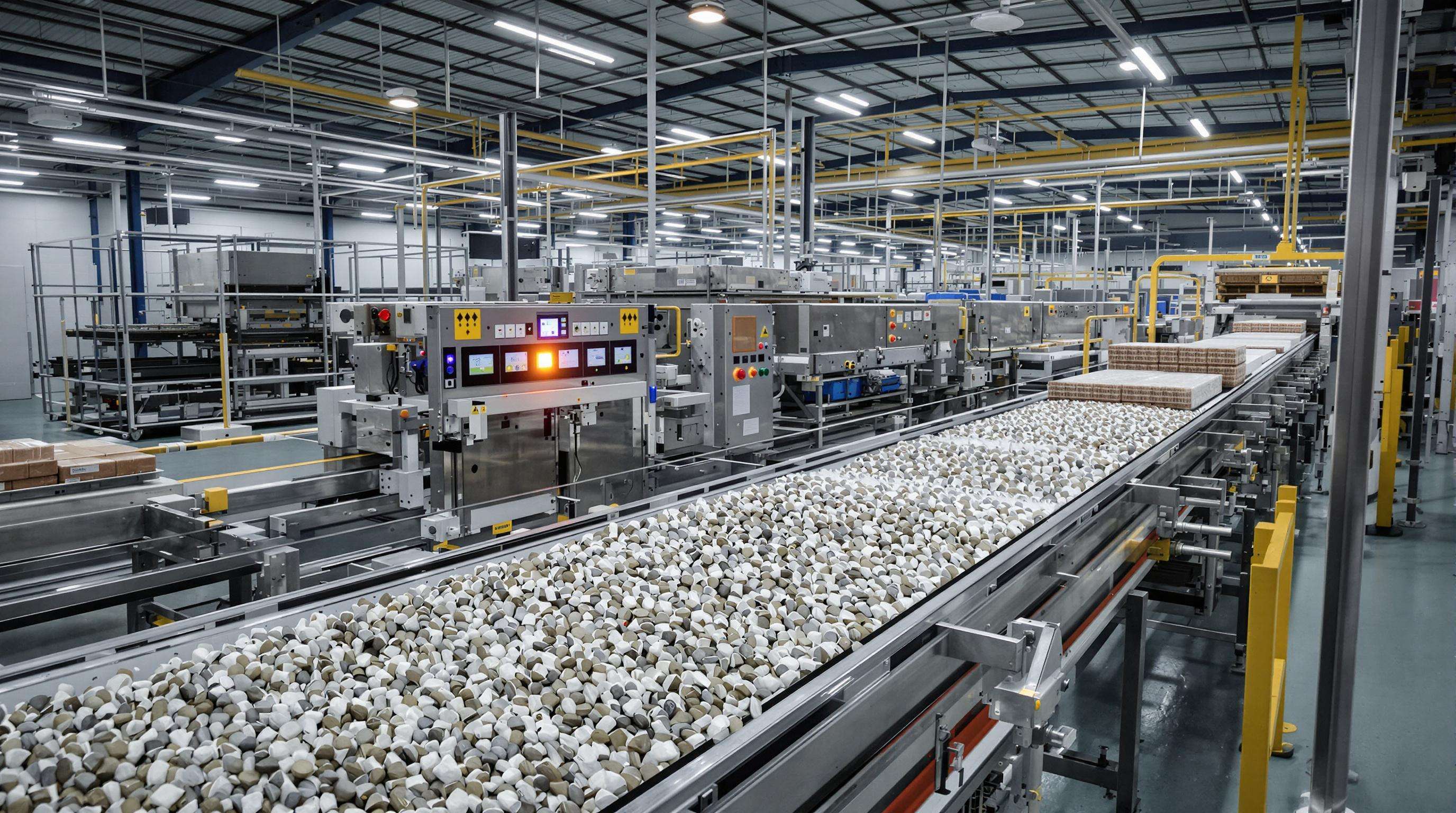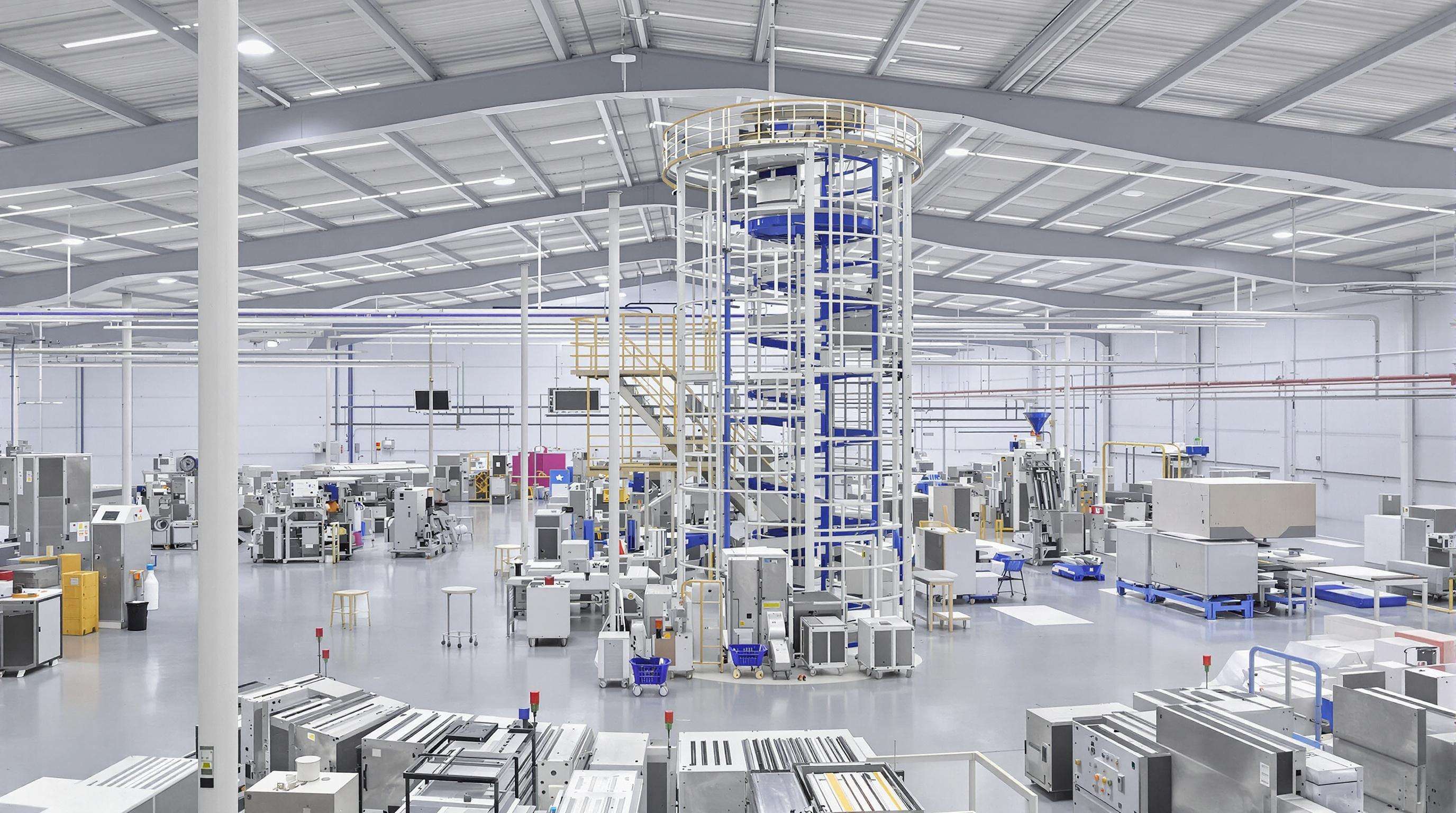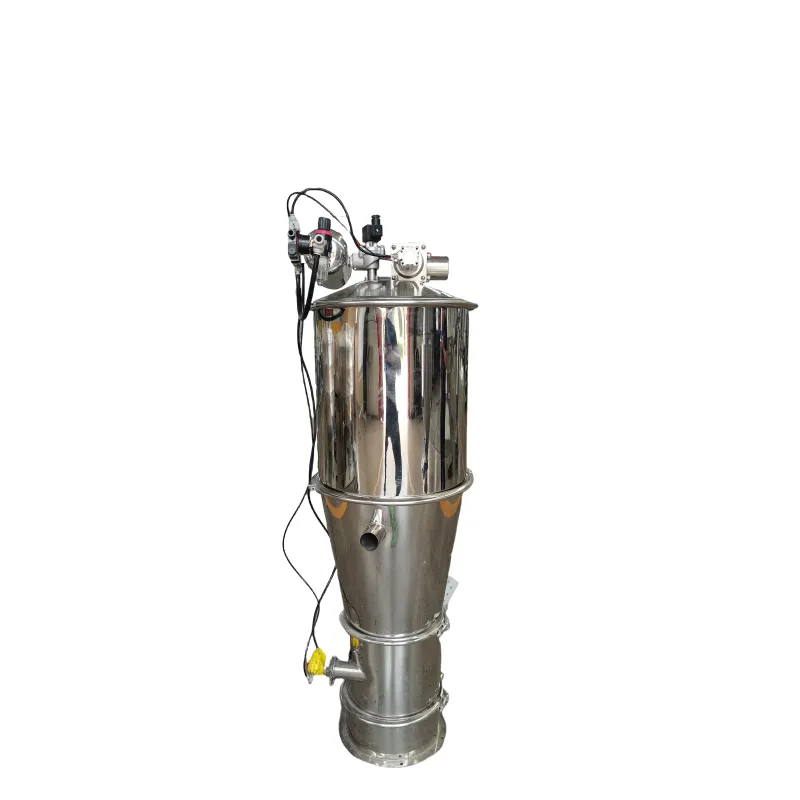Production Volume Analysis and Throughput Requirements

Size of production is supposing to size of conveyors, power and automation level. Heavy-duty belt or roller systems are used in plants that process more than 50 tons per hour, while pneumatic or material conveying systems are used in smaller at rates less than 10 tons/hr. Miscalculation of throughputs by ±15% can cause $220k in lost revenue a year for medium size award, so real-time monitor of loads is critical for dynamic production environments.
Space Constraints Impact on Material Conveying System Layouts

Vertical space utilization becomes critical in facilities with <20 ft ceiling clearances. Curved conveyors and spiral elevators enable 40% footprint reduction compared to traditional horizontal layouts. For facilities with irregular floorplans, segmented conveyor systems with 90° transfer units optimize material flow while maintaining OSHA-mandated 36" clearance zones around equipment.
Bottleneck Identification in Current Material Flow
Operational analysis should map material velocity at 8 key points:
- Raw material intake zones
- Intermediate processing stations
- Quality control checkpoints
- Final packaging areas
A 2024 AMA study revealed that 73% of throughput limitations occur at transfer points between conveyor types. Implementing tapered loading zones and variable frequency drives reduces impact-related product damage by 29% in fragile material handling scenarios.
Belt Conveyors: Applications and Limitations
Bulk material handling in mining, packaging and manufacturing belt conveyors are the most commonly used means for continuous transport. Transport of free flowing materials such as gravel, grains, or pack goods at distances of up to 50 km are possible with these systems. A mechanical conveyor system analysis demonstrates that they are more energy efficient than traditional chains options and in some cases can save up to 18-22% energy. Belt systems can't handle steep inclines greater than 20°, and take up too much horizontal room, which leaves them unsuitable for small spaces or transporting fragile materials.
Pneumatic Systems for Fragile or Hazardous Materials
Pneumatic conveying is the moving of powders, granules and other dry bulk material within a processing facility using pneumatic gas flow. They also offer inherent safety benefits inherent to vacuums as leaks will suck in air instead of emitting contaminants: highly desirable for pharmaceutical or chemical facilities. Although these systems are able to accommodate intricate process layouts with vertical or angled routing, they consume considerably more energy – 30-40% more – than mechanical conveyors.
Roller Conveyors in Heavy-Duty Production Environments
Gravity roller conveyors effectively transport everything from a packet of matches to a multi-ton car part without the assistance of power! Heavy models support loads of more than 2,000 kg per linear metre, making this better for the most weighty of loads than the majority of belt systems. Their straight-line design restricts adjustability to only the straight line, and metal to metal contact creates an audible 7590 dB sound level.
Screw Conveyors for Bulk Material Handling Efficiency
Rotating helical blades on the screw conveyor allow for proper volumetric control for materials such as cement, flour and granular plastics. It minimises both material spill and dust, with containment rates ranging from 98-99% for hazardous or volatile products. These mechanisms work best in horizontal or near-horizontal applications and tend to wear out very quickly when used to convey mediumly to high sticky materials such as wet clay.
Conveyor Speed and Throughput Optimization
System throughput must align with production targets while accommodating material properties like density and abrasiveness. Calculations for optimal conveyor speed should account for product dimensions, weight distribution, and required output volumes—typically measured in tons per hour (tph).
Line balancing techniques prevent bottlenecks by matching conveyor speeds to upstream/downstream processes. Variable frequency drives (VFDs) enable dynamic speed adjustments for mixed-material batches, reducing energy waste by up to 30% compared to fixed-speed systems.
Automation Level Integration Opportunities
Modern conveying systems increasingly integrate with Industrial Internet of Things (IIoT) platforms to enable real-time monitoring of wear patterns and material flow rates. Semi-automated systems with sensors reduce manual intervention by 40–60% in packaging and sorting applications while maintaining compatibility with legacy equipment.
Predictive maintenance algorithms—powered by vibration and thermal sensors—can decrease unplanned downtime by 25% in heavy-duty roller conveyor applications. Future scalability requires selecting control systems with open API architecture to accommodate emerging technologies.
Modular Designs for Product Diversity Adaptation
Modular material conveying systems enable manufacturers to adapt to product variations without complete system overhauls. A 2025 Materials Handling Report highlights that 78% of manufacturers now prioritize modularity to accommodate shorter product lifecycles and custom order requirements.
Scalability Planning for Future Production Growth
Effective scalability strategies prevent costly material conveying system replacements during capacity expansions. Key considerations include:
- Alignment with projected throughput increases (±25% capacity headroom)
- Compatibility with future automation technologies
- Structural capacity for potential speed enhancements
Technology Integration Strategies for Material Conveying Systems
Modern material conveying systems achieve peak performance through strategic adoption of artificial intelligence (AI) and real-time data analytics. Machine learning algorithms now optimize routing decisions and load balancing, with predictive maintenance protocols reducing downtime by 30–40% in facilities using smart sensor networks.
Cost-to-Value Assessment of Automation Levels
Automation selection balances upfront costs with operational savings. Semi-automated systems cut labor costs by 15-20%, while full automation reduces error-related material waste by 35%. Energy-optimized configurations consume 30% less power than conventional systems.
Lifecycle Cost Projections for Material Conveying Systems
Total ownership costs include maintenance intervals, component replacement cycles, and downtime impacts. Energy-efficient designs typically achieve 18-24 month payback periods, reducing total operational costs by 25% over a five-year lifecycle.
Vendor Selection Criteria for Material Conveying Systems
Selecting the right vendor requires evaluating technical expertise against operational demands. Prioritize providers demonstrating proficiency in system integration and maintenance responsiveness.
Demand documented compliance with industry-specific certifications like ISO 9001 for manufacturing environments or NSF/3-A standards for food-grade applications. Require proof-of-concept testing for throughput consistency (±2% variance tolerance) and material integrity preservation.
FAQ
Q: What are the main factors to consider when selecting a material conveying system?
A: Key factors include production volume, space constraints, throughput requirements, and adaptability to automate, among others.
Q: How do different conveying system types compare?
A: Belt conveyors are energy-efficient but require space, pneumatic systems handle fragile materials but consume more energy, roller conveyors are good for heavy loads, while screw conveyors offer volumetric control.
Q: Why is throughput optimization important?
A: Proper throughput optimization aligns system capacities with production targets, minimizes bottlenecks, and reduces energy waste.
Q: What role does automation play in conveying systems?
A: Automation enhances real-time monitoring, reduces manual labor, and enables predictive maintenance to improve efficiency.
Table of Contents
- Production Volume Analysis and Throughput Requirements
- Space Constraints Impact on Material Conveying System Layouts
- Bottleneck Identification in Current Material Flow
- Belt Conveyors: Applications and Limitations
- Pneumatic Systems for Fragile or Hazardous Materials
- Roller Conveyors in Heavy-Duty Production Environments
- Screw Conveyors for Bulk Material Handling Efficiency
- Conveyor Speed and Throughput Optimization
- Automation Level Integration Opportunities
- Modular Designs for Product Diversity Adaptation
- Scalability Planning for Future Production Growth
- Technology Integration Strategies for Material Conveying Systems
- Cost-to-Value Assessment of Automation Levels
- Lifecycle Cost Projections for Material Conveying Systems
- Vendor Selection Criteria for Material Conveying Systems
- FAQ

